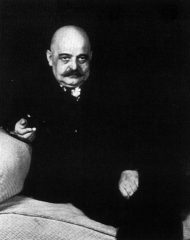Gurdjieff Home Page
Winter 1997/1998 Issue, Vol. I No. 2
Introduction
It is our whim to make this the best general website available on Gurdjieff. Lest you misinterpret our intention or ‘whim’ as flippant and frivolous, please let us share one of our favorite anecdotes…Commentary on Beelzebub’s Tales
Commentary by Terry Winter Owens and Suzanne D. Smith first issued by University Books in their Mystic Arts Book News, No. 78, 1964. Reprinted here by kind permission of the authors. “Despite all the inherent difficulties which Gurdjieff has implanted in the book—complexities in writing and in concepts, the rewards are there also. But in keeping with Gurdjieff’s philosophy, the rewards are commensurate with the reader’s struggle to find them.”Commentary on Meetings with Remarkable Men
Commentary by Terry Winter Owens first issued by University Books in their Mystic Arts Book News, No. 82, 1965. Reprinted here by permission of the author. “It is an adventure of the mind—growing, being formed, setting out after inner knowledge, discovering it and putting it to the test of practice. Thus it is an adventure in two worlds, and it will be the reader’s delight and enrichment to discern where one world ends and the other begins.”The Struggle to “Fathom the Gist” of Beelzebub’s Tales
An essay from Terry Winter Owens published here first. “For over 30 years, I have wanted to write a follow up to the essay on Gurdjieff’s All and Everything, that I wrote in the 1960s... Writing now from a different perspective, I want to specially focus on Gurdjieff’s ‘friendly advice’ to the reader and some issues that arose from a consideration of that advice.”Gurdjieff’s Philosophy of Nature
An earlier version of this extended essay was first published in English in Gurdjieff: Essays and Reflections on the Man and His Teaching edited by J. Needleman and G. Baker. Nicolescu offers a preliminary, but bold and rigorous, examination of a clear relationship between Gurdjieff’s cosmological mythos and current evidence for leading theories in physics and cosmology.No Harem: Gurdjieff and the Women of The Rope
Rob Baker sketches a group of strong-willed women, mostly writers who also happened to be lesbians, that Gurdjieff worked with from 1936—including Solita Solano, Kathryn Hulme, Margaret Anderson, Jane Heap, and Georgette Leblanc. First published here, Baker draws on the extensive research he is conducting for a forthcoming book on The Rope.Jane Heap (1887–1964)
A bio-sketch and selection of Heap’s aphorisms by Rob Baker published here first. Outlines Heaps’ life-long literary influence and forty years devoted to presenting Gurdjieff’s teaching to groups in London & Paris from 1924; then at Gurdjieff’s wish, in London from 1935 until her death.Great Harmonizer Tuning Up
New York Sun, January 27, 1931. A journalist’s account of his puzzling luncheon with Gurdjieff and his “staff” in their New York apartments and a reading from the typescript of Beelzebub’s Tales.G. Gurdjieff Explains
A letter to the New York World, February 6,1931. Gurdjieff explains that his current visit to America is in connection with his writing the second series.Gurdjieff and the Armenian Boy Sarkis
This anecdote recounted by Jeanne de Salzmann was first published in All My Yesterdays: an autobiography by Cecil Lewis on pp. 174–176.About This Publication
The Gurdjieff Home Page is published by Gurdjieff Electronic Publishing.
Any information or opinions expressed herein do not necessarily reflect the views of the editors.

“One of the best means of rendering ineffective the predisposition present in your nature of the crystallization of the consequences of the properties of the organ Kundabuffer is ‘intentional suffering;’ and the greatest intentional suffering can be obtained in your presences if you compel yourselves to be able to endure the ‘displeasing manifestations of others towards yourselves.’”
G. I. Gurdjieff
“If you have not by nature a critical mind your staying here is useless.”
G. I. Gurdjieff
Copyright © 1998
January 1, 1998
Gurdjieff Electronic Publishing